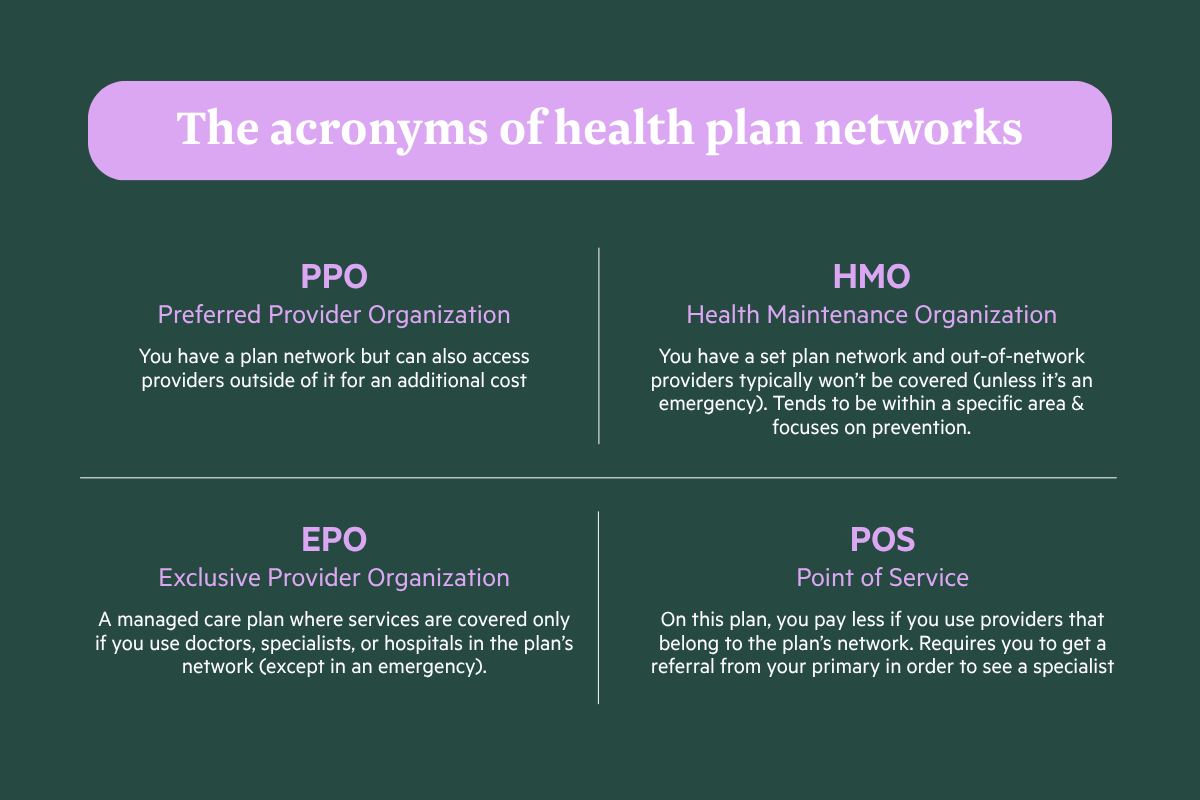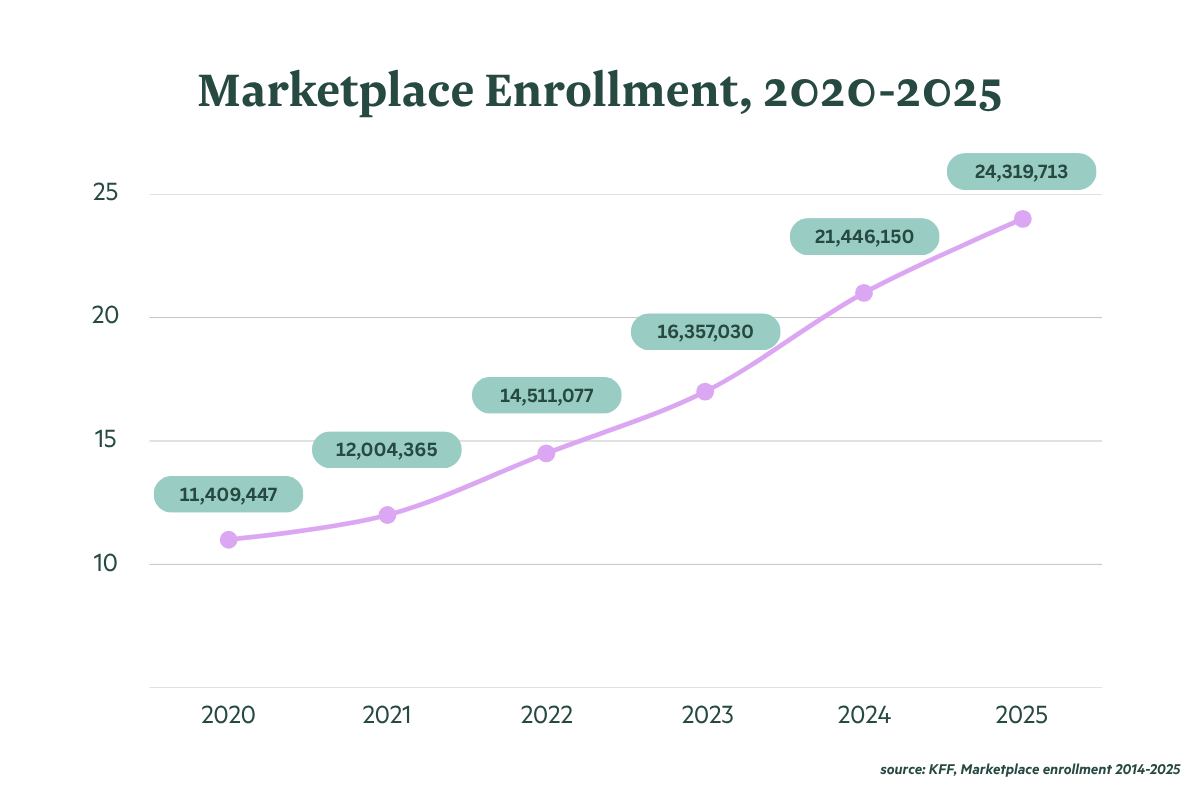The Affordable Care Act (ACA) changed the game when it comes to health coverage. It made health insurance more accessible and more affordable for millions of people. But it also inherited a ton of bad press. Somewhere along the way, ACA plans got wrapped in confusion, half-truths, and a few tall tales.
Whether you're shopping for a plan yourself or helping your team figure out their options through something like an ICHRA (hello, StretchDollar), let’s set the record straight. We’re busting some of the most common myths about ACA marketplace plans—so you can skip the guessing and make confident choices.
Quick note: ACA, Obamacare, marketplace, and health insurance exchange are all terms for the same thing. We’ll stick to ACA or the marketplace for this piece.
Misconception #1: ACA Plans Don’t Cover Out-of-Network Care
You’ve probably heard this one before: “If it’s out-of-network, you’re out of luck.” Not quite.
The most common myth surrounding ACA health insurance is the idea that they provide zero coverage for out-of-network care. That’s just not true.
The Reality
Most ACA health plans are HMOs or EPOs. (Sorry for all of the acronyms. That’s the language of healthcare. You can delve into them here.) These plan types tend to focus on in-network providers to keep costs lower. But when it comes to emergencies—like a car accident, or a sudden health scare while traveling—ACA plans are required to cover out-of-network emergency care just like it was in-network.
That means no prior approvals. No extra charges just because the nearest ER didn’t happen to be in-network. Emergency means emergency. Full stop.
Imagine having a medical emergency while traveling out of state on vacation. (We know, it’s not a vision you want to think about, but there is some good news.) Even if you’re far from home and the facility isn’t part of your insurer’s network, ACA regulations require that your care is covered as if it was in-network. Always double-check your plan’s details because every policy has varying limits and rules for non-emergency out-of-network care.
Also worth noting: Most ACA plans come with a national prescription drug network, so even if you're traveling, you’re likely still covered when it comes to picking up your meds.
Misconception #2: You Can’t Get a PPO Through the ACA Marketplace
A Preferred Provider Organization (PPO) used to be the gold standard for flexibility—go wherever you want, no referrals needed. While less common today as new plan types have emerged (HMOs, EPOs, POS, oh my), many incorrectly believe that these plans are no longer available under the ACA. The truth is many markets have PPOs, it’s just that you have to be willing to pay the higher price tag for that extra flexibility.
The Reality
While PPOs are less common on the ACA marketplace, they do exist in certain areas. The reason you don’t see them everywhere mostly comes down to cost. PPOs give you more freedom, like visiting specialists or out-of-network providers without jumping through hoops. However, that freedom comes at a higher price, both for you and the insurance company.
Because of that, most ACA plans default to HMOs or EPOs. They keep premiums lower and still offer great coverage, especially if you’re good with staying in-network.
Ironically, even many traditional employer PPOs today don’t include meaningful out-of-network benefits anymore. So what you think is a PPO might function more like an EPO or an “open panel” HMO. In non-insurance jargon, think of it as a plan that doesn’t require referrals for specialists but still keeps you within a specific network.
In other words, don’t let the plan name fool you. Whether you're shopping on the marketplace or through an employer, it’s worth checking what the plan actually includes. Sometimes the "flexibility premium" isn’t giving you much extra at all.

Misconception #3: ACA Plans Are Only for the Uninsured or Low-Income Families
Let’s just squash this one quickly: ACA plans aren’t just a fallback for the uninsured or low income earners. You don’t need to believe us, look at the numbers. In 2014, fewer than 8 million people were signed up for a marketplace plan. Today, that number is over 24 million.

The Reality
The ACA health insurance coverage is for everyone. That includes full-time workers, freelancers, part-timers, early retirees, and yes—even employers offering benefits through ICHRA. (If that’s new to you: StretchDollar helps small businesses give their team tax-free dollars to shop for their own ACA health plan. Zero stress. Big savings.)
One key part of the ACA is its income-based subsidies, which make insurance premiums more affordable for a variety of income levels. You don’t have to be near the poverty line to qualify. In fact subsidies are offered for families with incomes up to 400% above the poverty line. So, a family of four earning up to around $125,000 could still get help covering premiums.
That means a lot of middle-income households can get quality coverage at a price that fits their budget.
Check out this article to learn more about subsidies.
Misconception #4: ACA Health Plans Are the Same Everywhere
It’s also commonly believed that ACA plans are the same everywhere, offering the exact same options and coverage no matter where you live. That’s a hard no.
The Reality
ACA health insurance plans must follow federal guidelines regarding coverage (e.g., they must cover essential health benefits like maternity care, mental health services, and more), what’s available varies a lot by state. Some states run their own marketplaces. Others (like Texas) use the federal marketplace. And the options—plans, carriers, even pricing—can look very different.
For instance, California has a robust state marketplace with extensive choices, including occasional PPOs or discounted premiums. New York is the flip side of this, where the state based marketplace is notoriously rough to work with and comes with some of the highest premiums.Then you have Texas which uses the federal marketplace and has some of the most plan options to choose from, but doesn’t offer any PPOs.
One of the good parts of this variability is that oftentimes, employees, wherever they are, can find carriers that work specifically for them. This means California employees can get their Kaiser plans while Pennsylvanians can bop right onto their UPMC ones.
Smaller states may offer limited options due to fewer participating insurers. It’s essential to research your state’s unique offerings during the enrollment period to understand the specific opportunities available to you.
You can read more about states in the marketplace here.
Misconception #5: ACA Health Plans Are Only for Individuals, Not Families
Some believe ACA plans are just for individuals and can’t support families. Not even close.
The Reality
ACA plans are built for families, too. Children, or young dependents, can stay on a parent’s plan until age 26. Since subsidies are calculated based on household income, this often makes family coverage surprisingly affordable. (Check out myth #4 above.)
For many families, ACA plans can actually be cheaper than traditional employer coverage. Lower premiums, better networks, and more flexibility? That’s a win-win-win.
Clearing the Air
ACA health insurance plans have simplified access to healthcare for millions, but misconceptions can muddy the waters. The best way to choose a health plan—whether you’re an individual or a business—is by knowing what’s actually true.
Our advice—if you’re exploring plans on the marketplace, take the time to research your state’s offerings and consider your family’s specific healthcare needs. (We’ve got a guide for that.) With the correct information in hand, you can confidently find a plan on the marketplace that fits your budget and lifestyle.
Curious what ACA plans are available to you or your team?
We’ll help you find out—and stretch your health benefit budget further than you thought possible: Get started with StretchDollar.






